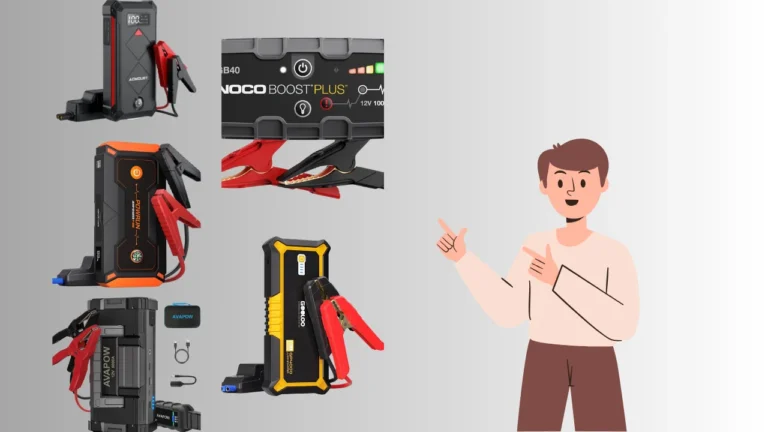A dead car battery can be an incredibly frustrating experience, especially when you’re stuck without the proper tools like jump leads. But did you know that there are alternative ways to start your car without the need for jumper cables? So, how to jump start a car without jump leads?
In this guide, we’ll dive into what jump cables are, why you might need to jump-start your car without them, what items are required, and a step-by-step breakdown of how to get your car running again. Learn the step-by-step process on how to jump-start a diesel truck with 2 batteries, ensuring you avoid potential mistakes that could damage your vehicle or batteries.
What Are Jump Leads, and Why Are They Commonly Used?
Jump leads, also known as jumper cables, are thick wires with clamps on both ends. They are designed to transfer power from a working car’s battery to the flat battery of another vehicle.
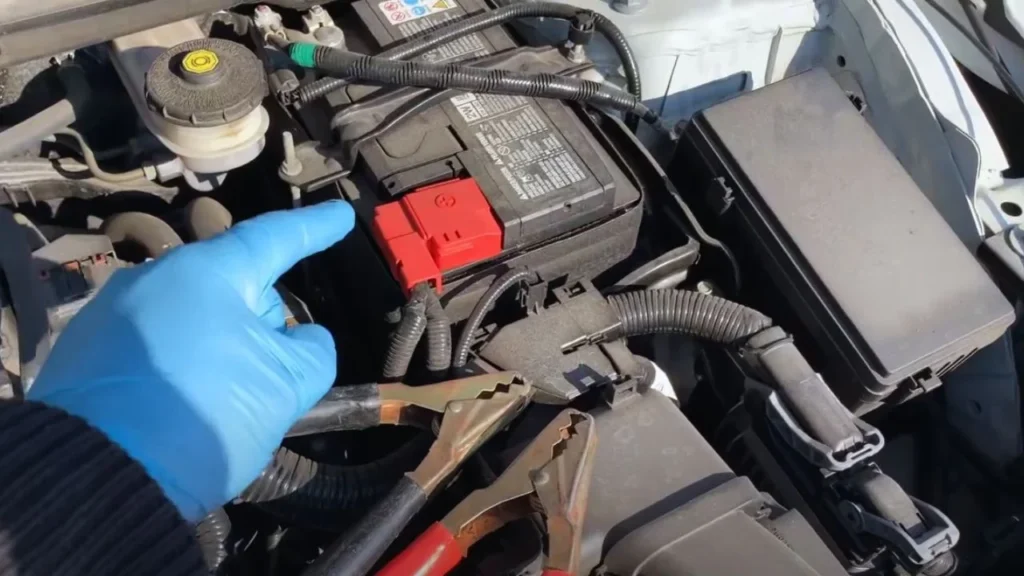
Jump leads are the most common and straightforward tool for reviving a dead battery, and they typically connect the positive and negative terminals of the two batteries, allowing electricity to flow from one to the other. Understand the process and precautions when jump-starting a 24V system with a 12V battery to prevent system overloads.
Quick Guide: Jump-Starting a Car Without Leads
Each method has its benefits, depending on your resources and situation.
While jump leads are convenient, there are situations where they aren’t readily available—perhaps you’ve forgotten to keep a pair in your car, or maybe there’s no other vehicle around to assist you. This is where alternative methods come into play, and these can save you from being stranded. Discover practical advice on how to jumpstart a refrigerator compressor, a useful guide for when your fridge stops cooling properly.
Why Jump-Start a Car Without Leads?
The need to jump-start your car without leads can arise in various scenarios:
- No access to jumper cables: You forgot to pack them or never owned a pair.
- No other vehicle nearby: You’re in a remote area with no help.
- Safety concerns: Jumping your car with another vehicle can sometimes lead to complications like voltage surges or damaging the car’s electrical systems.
- Self-reliance: Learning to start a car without jump leads increases your preparedness for emergencies, allowing you to take control of the situation.

Items You Need
Depending on the method you use, here are the items that could be required:
- A manual transmission car: This is crucial for push-starting.
- A friend or helper: To help push the car.
- A downhill slope: If you’re alone, gravity can be your helper.
- A spanner or long metal tool: This is used in bridging two batteries when available (more on this below).
- Portable jump starter: A handy alternative to jump leads.
How to Jump Start a Car Without Jump Leads | Step-by-Step Guide
There are a few methods to jump-start your car without jumper cables. The most popular options are push-starting (also known as bump-starting) and using a portable jump starter. Here’s, how to jump start a car without jump leads:
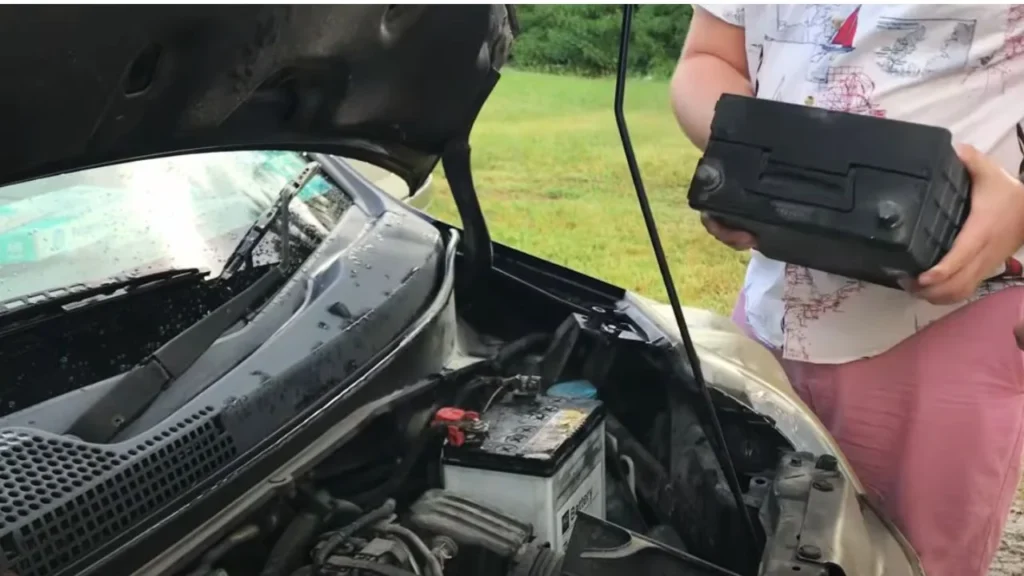
Method 01: Push-Starting (Jump Starting) Your Car
Push-starting works only for vehicles with a manual transmission. If you drive an automatic, this method won’t be applicable.
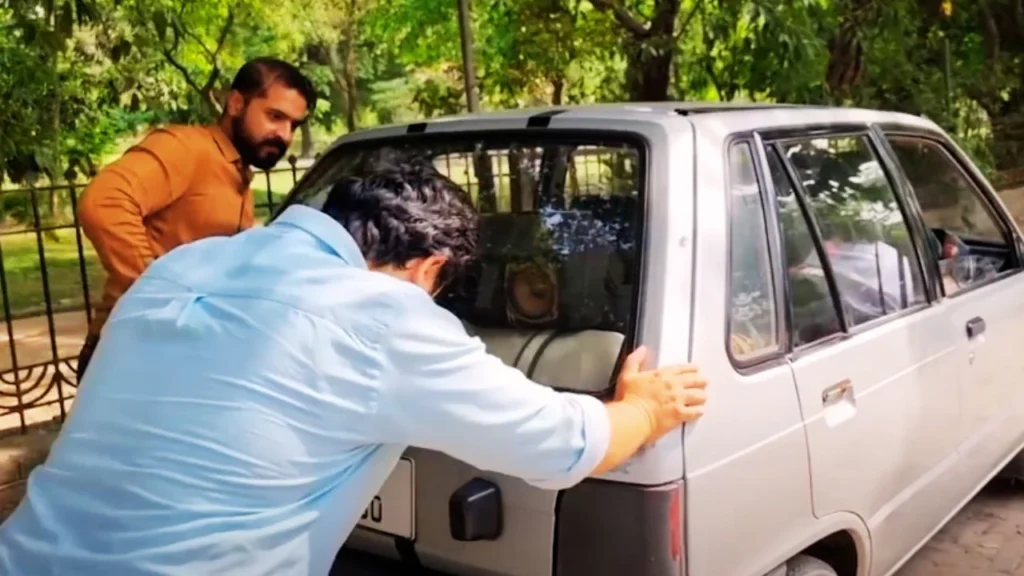
What You’ll Need:
- A helper or two (if you’re on flat ground).
- A road with no traffic or, ideally, a downhill slope.
Steps:
- Get your helpers in place: If you’re on a flat road, have your helpers stand behind the car, ready to push. If you’re on a hill, position the car facing downhill.
- Press the clutch and shift to second gear: This is key because second gear is smoother and provides a better chance for the engine to engage.
- Turn the ignition on: The key must be in the “on” position, but don’t crank the engine yet.
- Release the handbrake: If you’re on flat ground, ask your helpers to start pushing the car. On a slope, allow the car to begin rolling downhill.
- Release the clutch quickly: Once you reach about 5-10 mph, release the clutch sharply while keeping your foot on the gas pedal. If done right, this should start the engine.
- Drive the car for a bit: After the engine starts, drive for at least 15 minutes to ensure the alternator recharges the battery properly.
This method is effective for a quick solution but requires assistance or a downhill road.
Method 02: Using a Portable Jump Starter
A portable jump starter is a compact device that allows you to jump-start your car without another vehicle. These devices come with built-in cables and can be a lifesaver in emergencies.
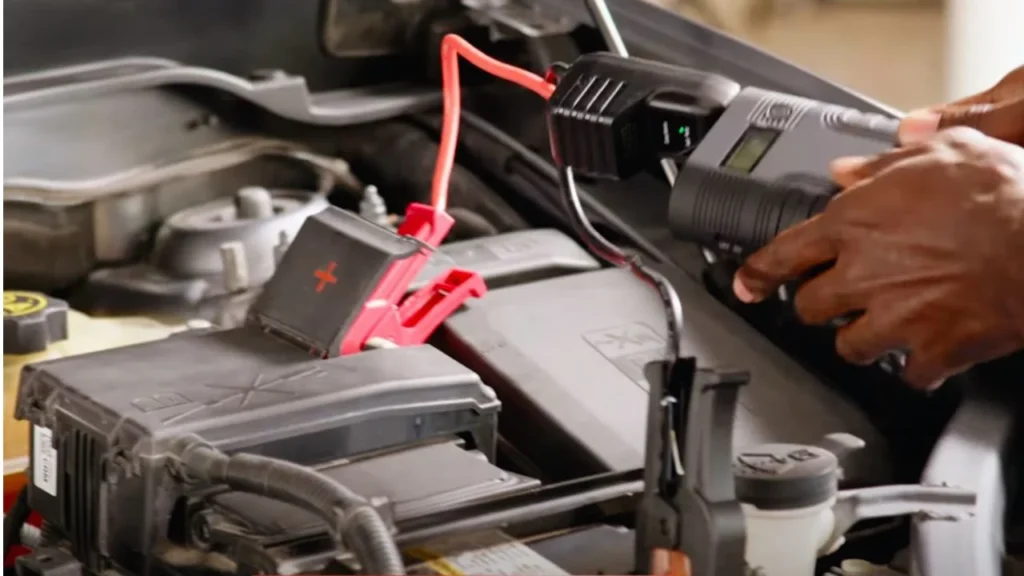
What You’ll Need:
- A fully charged portable jump starter.
Steps:
- Connect the jump starter: Attach the red clamp to the positive terminal (+) of your dead battery and the black clamp to a metal ground or the negative terminal.
- Turn on the jump starter: Most models have a power switch. Ensure it’s fully charged and functioning properly.
- Start your car: After a few moments, turn the ignition key and start your car.
- Disconnect the jump starter: Once the car starts, turn off the jump starter and remove the cables in reverse order.
This method is both safe and convenient, allowing you to avoid reliance on another vehicle. Explore whether it is bad to keep jump-starting your car battery, including the long-term effects it may have on your vehicle’s performance.
Method 03: Bridging Two Batteries with Tools
This method is less conventional and should only be attempted with care. It involves connecting a working battery (from another vehicle or external source) to the dead battery using a long metal tool, like a spanner.
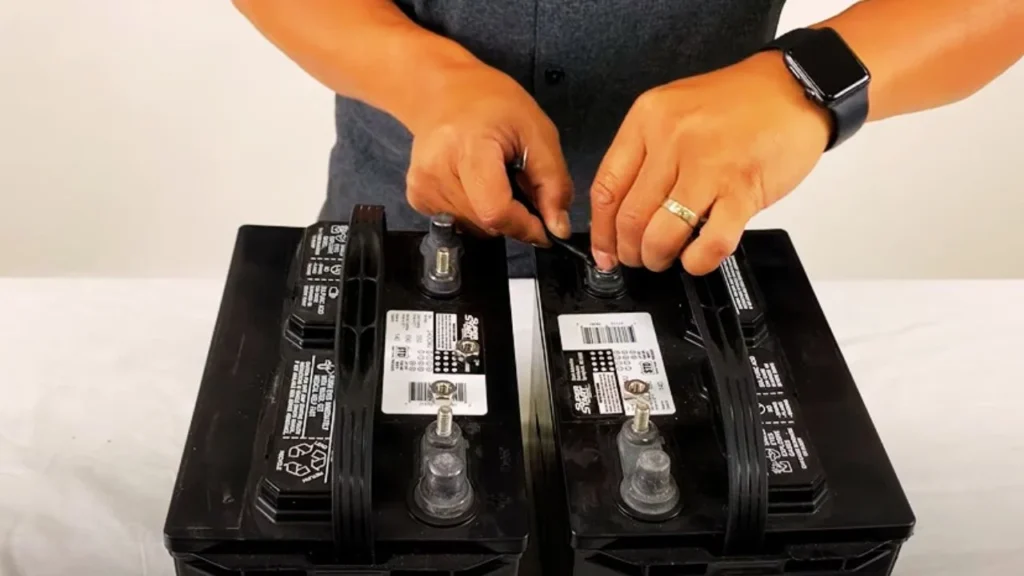
What You’ll Need:
- A working battery.
- A spanner or long tool.
Steps:
- Place the batteries side by side: Make sure both batteries are easily accessible.
- Bridge the terminals: Connect the red terminals of both batteries using one tool (spanner) and the black terminals with another. Be cautious not to let the tools touch the car’s body.
- Start the car: Turn the ignition, and the car should start after a few minutes.
- Let the engine run: Once the car starts, let the engine run for at least 15 minutes.
Safety Tips and Precautions
Jump-starting a car, even without jumper cables, can be risky if not done correctly. Here are a few safety tips:
- Always be cautious of sparks: Batteries emit hydrogen gas, which is highly flammable. Avoid creating sparks while connecting or disconnecting any leads or tools.
- Wear protective gear: If possible, wear gloves and safety glasses when handling car batteries.
- Ensure correct polarity: Always make sure you’re connecting the correct terminals (positive to positive, negative to ground or negative).
- Never attempt with a damaged battery: If your battery is leaking or physically damaged, do not attempt any form of jump-starting. Seek professional help.
Why You Should Always Be Prepared for a Dead Battery: The Importance of Preventive Measures
Although knowing how to jump-start your car without jump leads is useful, it’s even better to prevent your battery from dying in the first place. Regular car maintenance and awareness of your battery’s condition can save you from ever needing to push-start or rely on external tools. Here’s a breakdown of how to maintain your car battery, warning signs of a failing battery, and long-term strategies to keep your car running smoothly.
1. Understanding Battery Lifespan
The average car battery lasts between 3 to 5 years, depending on various factors like driving habits, weather conditions, and maintenance. Batteries naturally degrade over time, with chemical reactions inside becoming less efficient at holding a charge. It’s important to monitor your battery’s age, so you’re aware of when it’s approaching the end of its life.
Here are a few ways to extend your battery’s lifespan:
- Drive your car regularly: Batteries recharge through the alternator when the car is running. If you leave your car idle for too long, the battery loses charge.
- Avoid short trips: Short trips don’t give the battery enough time to recharge fully. Longer drives help maintain battery health.
- Keep the terminals clean: Corrosion can accumulate on the battery terminals, preventing efficient power flow. Cleaning these regularly with a wire brush can prolong the battery’s life.
- Inspect for damage: Any cracks or leaks are signs the battery should be replaced immediately, as these can lead to rapid failure. Discover the steps for jump-starting a Mini Cooper efficiently and avoid damaging your car’s sensitive electronics.
2. Signs Your Battery Is Failing
Recognizing the early warning signs of a dying battery can save you from being stranded. Some common symptoms include:
- Slow engine crank: If your car takes longer to start or the engine cranks slower than usual, it could be due to insufficient power from the battery.
- Dim headlights: A weak battery will result in dimmer lights, both inside and outside the car.
- Electrical issues: Faulty battery power can cause erratic behavior in systems such as power windows, radio, or dashboard lights.
- Battery warning light: Many cars have a warning light on the dashboard that signals problems with the charging system, including a weak or failing battery.
If you notice any of these signs, it’s time to have your battery tested or replaced before it completely dies.
3. Preventive Tools and Tips
There are several tools and habits that can help you stay prepared and avoid the need for emergency jump-starts:
- Battery testers: A battery tester is a handy tool that provides real-time data on your battery’s charge level. This can be used to monitor your battery periodically, especially before long trips.
- Portable jump starters: Investing in a portable jump starter can be a lifesaver, especially if you frequently drive in remote areas where getting help might be difficult. These compact devices are easy to use and don’t rely on external vehicles to jump-start your car.
- Keep accessories off when parked: Leaving headlights, interior lights, or the radio on when your car is off can drain the battery quickly. Make it a habit to double-check all accessories before exiting your vehicle.
Even in a well-maintained vehicle, emergencies can happen. Having a portable jump starter and a battery maintenance kit in your car ensures you’re always prepared.
Wrapping Up:
While jump leads are the go-to solution for reviving a dead battery, knowing how to jump-start a car without them is an invaluable skill. Whether through push-starting, using a portable jump starter, or bridging two batteries, these methods provide alternative solutions when you’re in a bind. Learn how to safely jump-start a box truck with this guide on jump-starting a box truck, covering essential tools and step-by-step instructions.
Each method has its own set of requirements and risks, so always proceed with caution and follow the steps carefully. Preparing for these situations in advance can save you both time and stress on the road. Hope so, now you know, how to jump start a car without jump leads.
Ali is a tech enthusiast and automotive aficionado, passionate about sharing insights on the latest innovations and industry trends.

